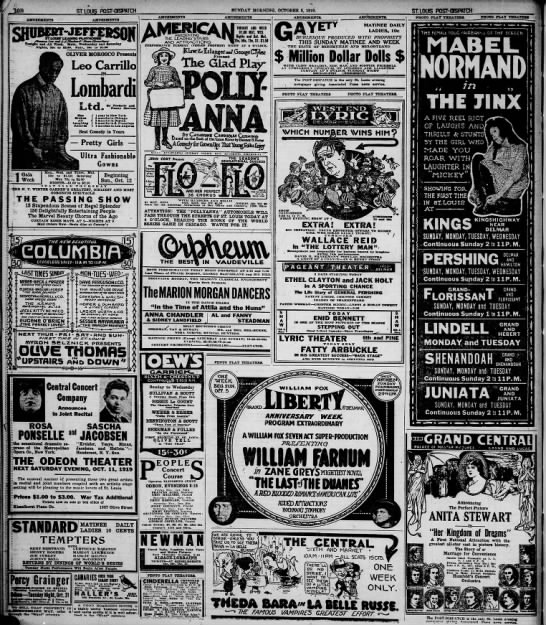 |
| Helen Korngold, Dec. 1919, New York City |
After several boring weeks at home, Helen gets a teaching position substituting at Maplewood High. She likes it much better than Wellston.
September
Monday 29
Washing. I didn’t help.
Tuesday 30
Finished up ironing.
October
Wednesday 1
Substituting at Maplewood High. I’m crazy about it. Can’t see why I didn’t take that job in the beginning. I was a big fool.
Tuesday 2
I certainly like Maple
Friday 3
Mr. Richmond & Gooch are dears
Saturday 4
Such nice children, too. Yom Kippur
Sunday 5
The school was beautiful.
NOTES:
Friday 3
A Wilbur I. Gooch appears on the 1920 St. Louis Federal Census working as a high school teacher. He was born in Minnesota in 1885 and was married to Nellie, age 22.
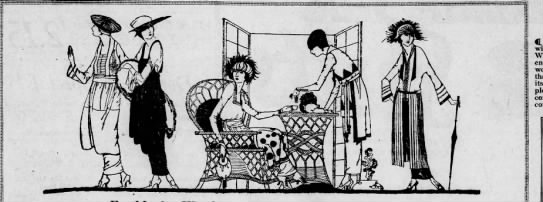
In the St. Louis Post-Dispatch newspaper of October 5, 1919, the licensing of auto drivers is discussed.
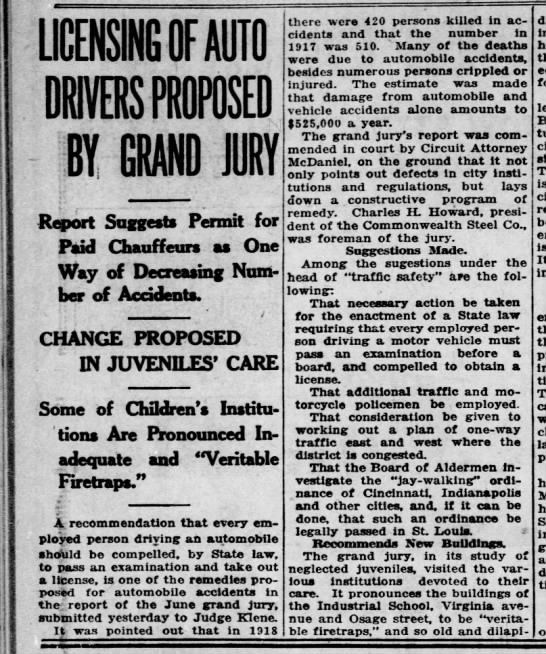
"A recommendation that every employed person driving an automobile should be compelled, by State law, to pass an examination and take out a license, is one of the remedies proposed for automobile accidents in the report of the June grand jury, submitted yesterday to Judge Klene. It was pointed out that in 1918 there were 420 persons killed in accidents and that the number in 1917 was 510. Many Of the deaths were due to automobile accidents, besides numerous persons crippled or injured. The estimate was made that damage from automobile and vehicle accidents alone amounts to 1525,000 a year."

Sales on fall fashions:
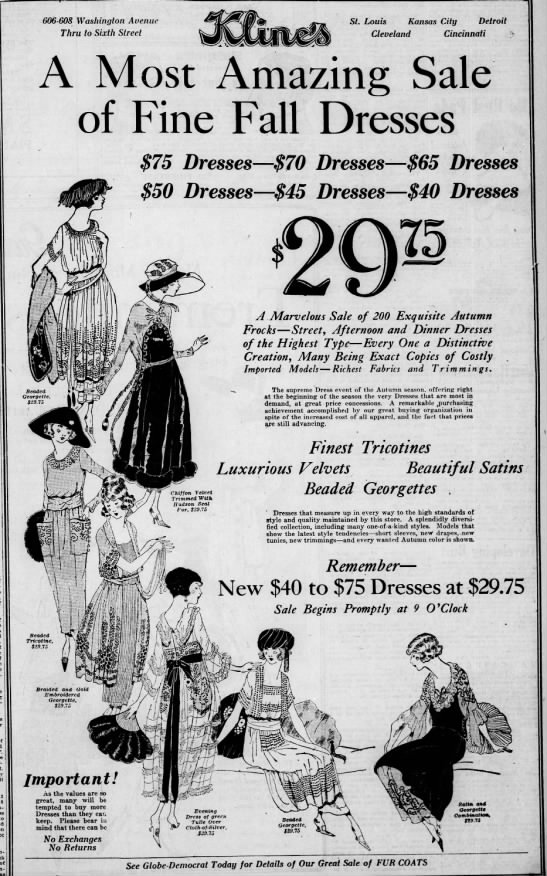
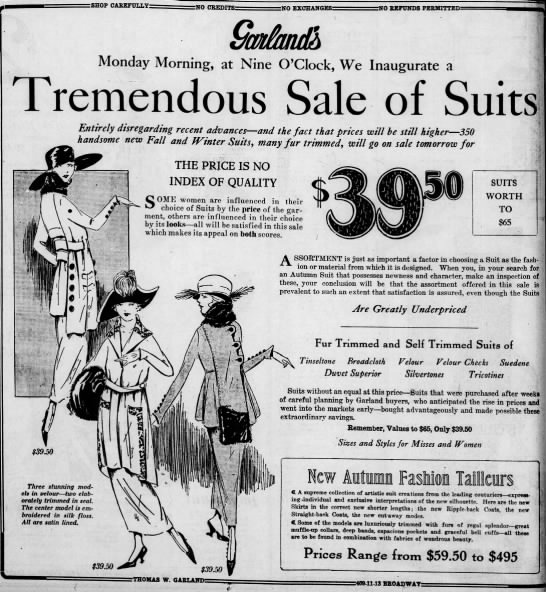
And a shipment of antique and modern Chinese embroidery arrived:
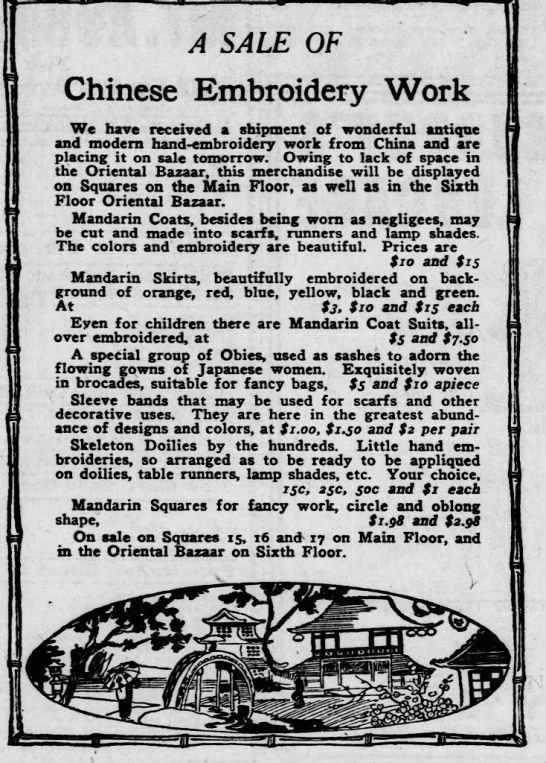
A SALE OF Chinese Embroidery Work
We have received a shipment of wonderful antique and modern hand-embroidery work from China and are placing it on sale tomorrow. Owing to lack of space in the Oriental Bazaar, this merchandise will be displayed on Squares on the Main Floor, as well as in the Sixth Floor Oriental Bazaar.
Mandarin Coats, besides being worn as negligees, may be cut and made into scarfs, runners and lamp shades. The colors and embroidery are beautiful. Prices are $10 and $15 Mandarin Skirts, beautifully embroidered on background of orange, red, blue, yellow, black and green. At $3, $5, and $15 each.
Even for children there are Mandarin Coat Suits, all-over embroidered, at $5 and $7.50
A special group of Obies, used as sashes to adorn the flowing gowns of Japanese women. Exquisitely woven in brocades, suitable for fancy bags, $5 and $10 apiece.
Sleeve bands that may be used for scarfs and other decorative uses. They are here in the greatest abundance of designs and colors, at $1.oo, $1.50 and $2 per pair. Skeleton Doilies by the hundreds. Little hand embroideries, so arranged as to be ready to be appliqued on doilies, table runners, lamp shades, etc. Your choice, 15c, 25c, 50c and $1 each.
Mandarin Squares for fancy work, circle and oblong shape, $1.98 and $2.98
On sale on Squares 15, 16 and 17 on Main Floor, and in the Oriental Bazaar on Sixth Floor.
State-of-the-art home equipment promised to "eliminate the drudgery of hard work."

Outfit three rooms at $139.50 or $2.50 a week! $2.50 adjusted for inflation would be $37.07 today. What a bargain!

I love this Black Jack gum ad. My dad bought it and other Adams gums in the 1950s. You can find Black Jack today at specialty stores. I saw it in JoAnne Fabrics!

And I loved these brownies or elves making candy.
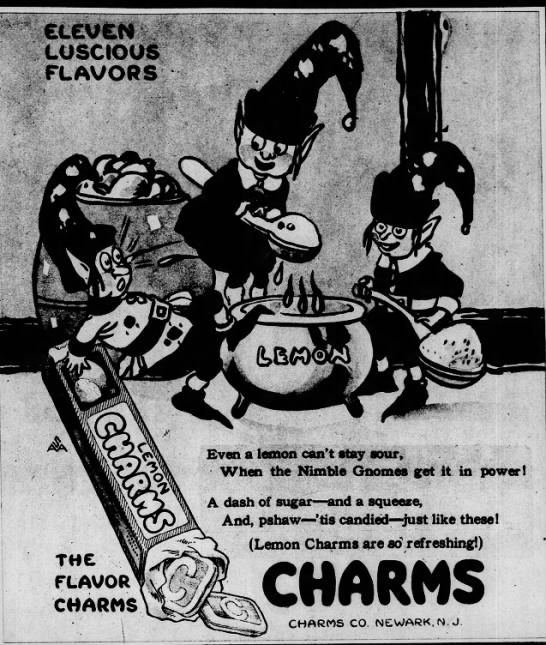
What an adorable ad of children's toys!

A whole page of movie, theater, and vaudeville-
